Consider a light beam incident from air to a glass slab at Brewster's angle as shown in figure.
A polaroid is placed in the path of the emergent ray at point P and rotated about an axis passing through the centre and pependicular to the plane of the plaroid.
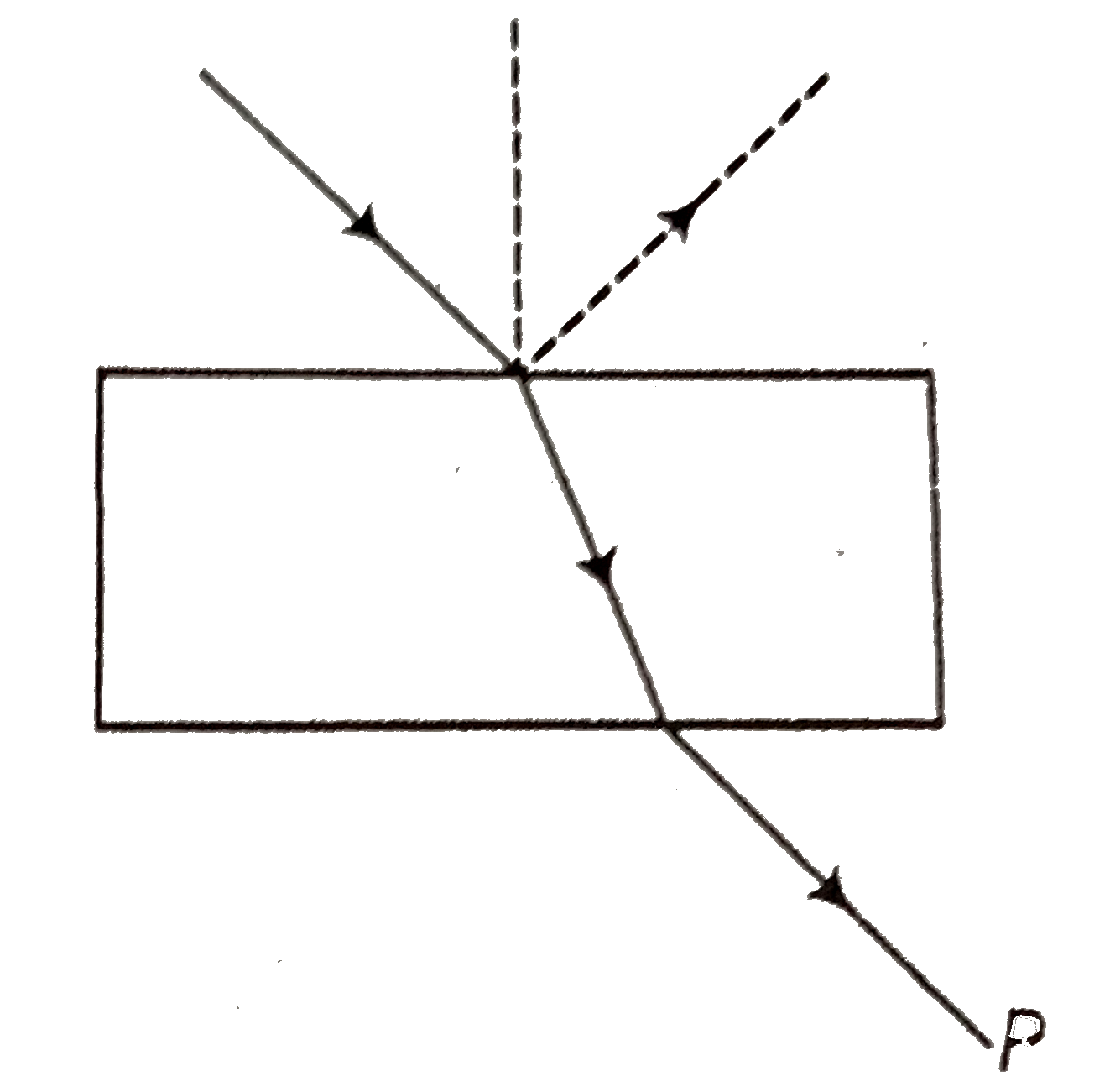
For a paricular orientation there shall be darkness as observed through the polaroid.
The intensity of light as seen through the polaroid shall be independent of the rotation.
The intensity of light as seen through the polaroid shall go through a minimum but not zero for two orientations of the polaroid.
The intensity of light as seen through the polaroid shall go through a minimum for four orientations of the polaroid.
The correct Answer is:C
According to Brewster's law , the light reflected from the top of glass slab gets polarised as shown in figure. The light refractd into the glass slab and the light emerging from the glass slab is only partially polarised.
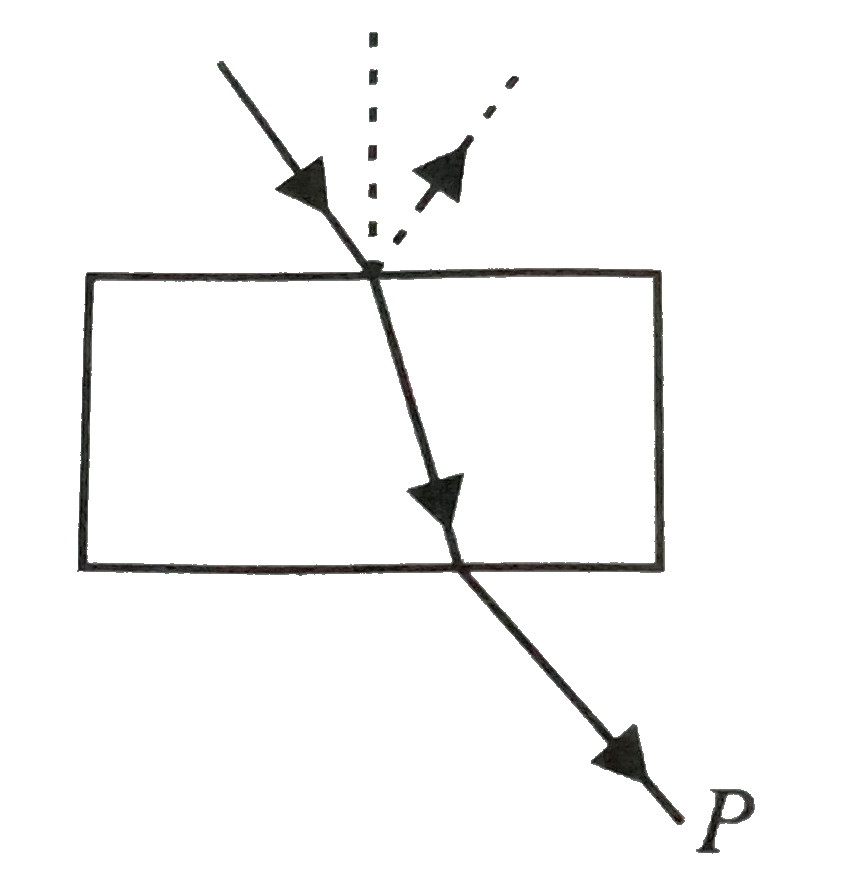
Therefore, when a polaroid is held emergent light at P, and rotated about an axis passing through the centre and perpendicular to plane of polaroid, the intensity of light shall go through a minimum but not zero for two orientations of the polaroid.
Topper's Solved these Questions
- BOOK - NCERT FINGERTPS ENGLISHCHAPTER - WAVE OPTICSEXERCISE - ASSERTION & REASON CORNER15videos
WAVE OPTICS
- BOOK - NCERT FINGERTPS ENGLISHCHAPTER - WAVE OPTICSEXERCISE - Huygens Principle4videos
WAVE OPTICS
- BOOK - NCERT FINGERTPS ENGLISHCHAPTER - WAVE OPTICSEXERCISE - HIGHER ORDER THINKING SKILLS8videos
WAVE OPTICS
- BOOK - NCERT FINGERTPS ENGLISHCHAPTER - SEMICONDUCTOR ELECTRONICS : MATERIALS , DEVICES AND SIMPLE CIRCUITS EXERCISE - Assertion And Reason15videos
SEMICONDUCTOR ELECTRONICS : MATERIALS , DEVICES AND SIMPLE CIRCUITS
Similar Questions
Consider is light beam incident from air to a glass slab at
Brewster.s angle as shown in Fig.
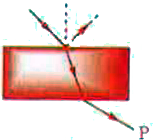
A Polaroid is placed in the path of the emergent ray at point P and rotated about an axis passing through the centre and perpendicular to the plane of the polaroid.View SolutionWhite light is incident on the interface of glass and air as shown in figure. If green ligth is just totally internally reflected then the emerging ray in air contains
 View Solution
View Solution
Knowledge Check
- Question 1 - Select One
A short pulse of white light is incident from air to a glass slab at normal incidence. After travelling through the slab, the first colour to emerge is.
AblueBgreenCvioletDred - Question 2 - Select One
A rays of light is incident on a thick slab of glass of thickness t as shown in figure. The emergent ray is parallel to the incident ray but displaced sideways by a distance d. If the angles are small then d is
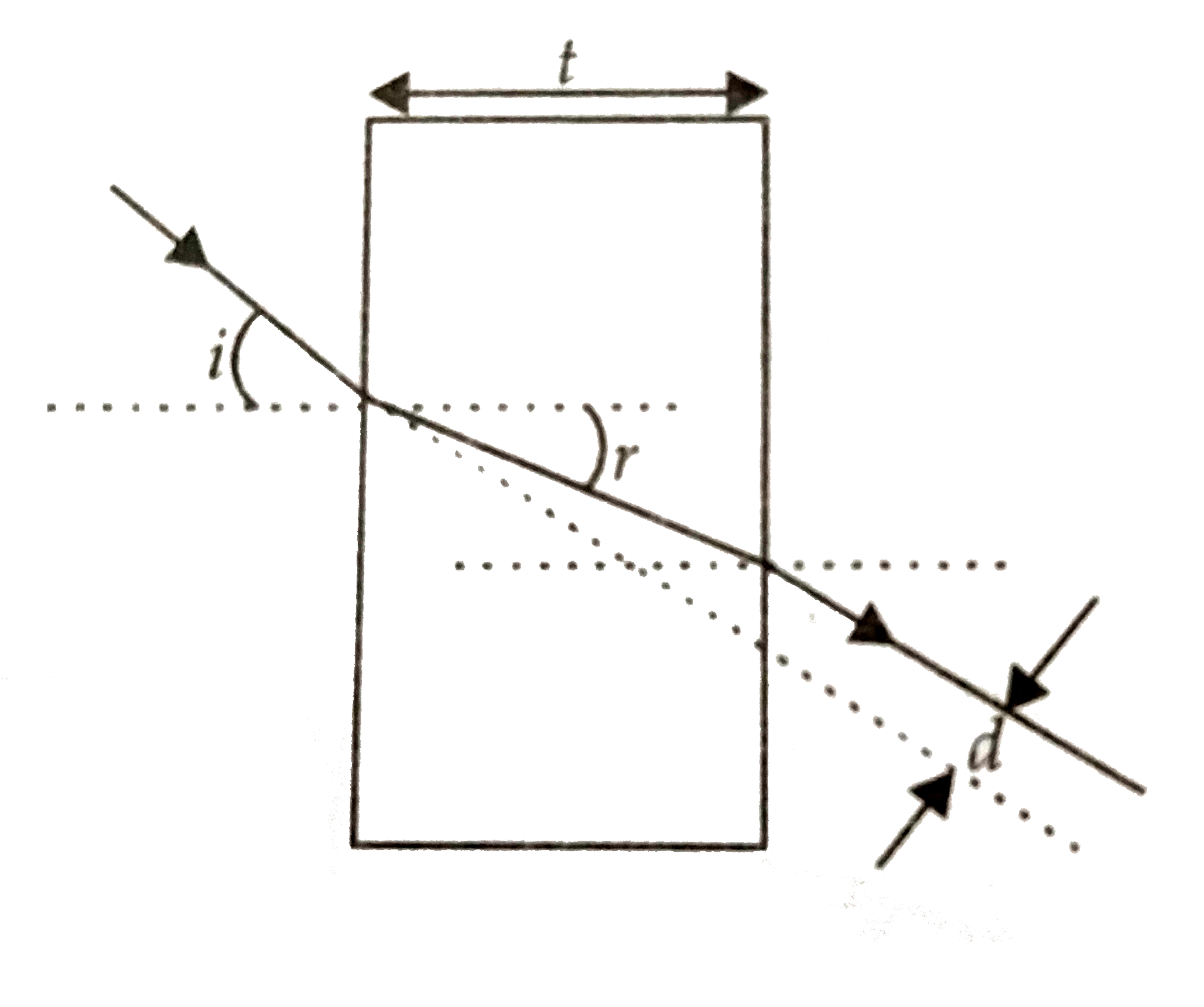 At(1+ir)Brt(1−ir)Cit(1−ri)Dt(1+ri)
At(1+ir)Brt(1−ir)Cit(1−ri)Dt(1+ri)
White light is incident on the interface of glass and air as shown in figure. If green ligth is just totally internally reflected then the emerging ray in air contains
 View Solution
View SolutionA short pulse of white light is incident from air to a glass slab at normal incidence. After travelling through the slab, the first color to emerge is.
View SolutionA uniform semicircular disc of mass 'm' and radius 'R' is shown in the figure. Find out its moment of inertia about.
(a) axis 'AB'( shown in the figure 0 which passes through geometrical centre and lies in the plane of the disc
(b) axis 'CD' which passes through its centre of mass and it is perpendicular to the plane of the disc.
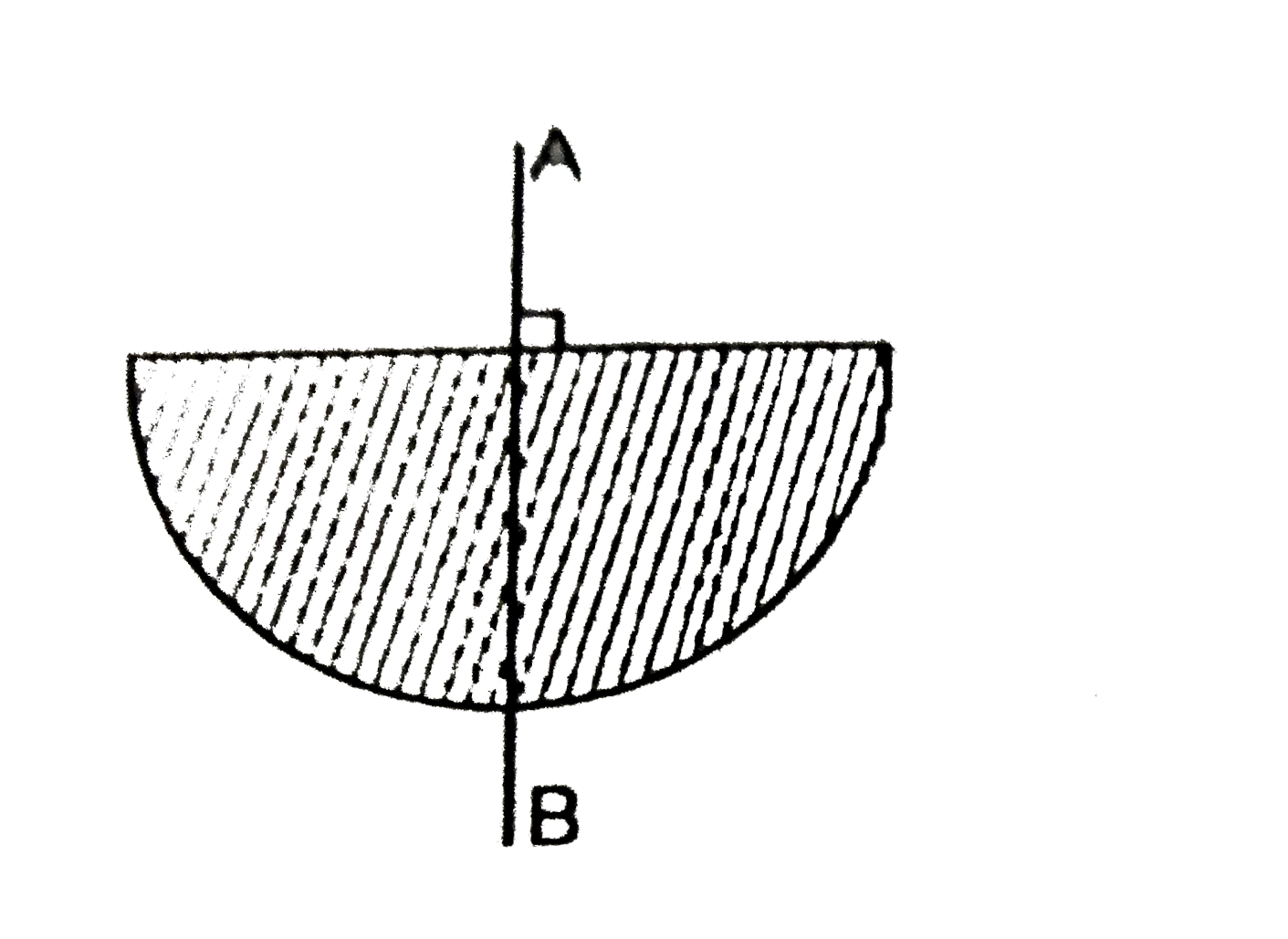 View Solution
View SolutionLight incidence on a sphere of refractive index √3 placed in a air as shown in Figure. Find the angle (θ)in degree between emergent ray and reflected ray.
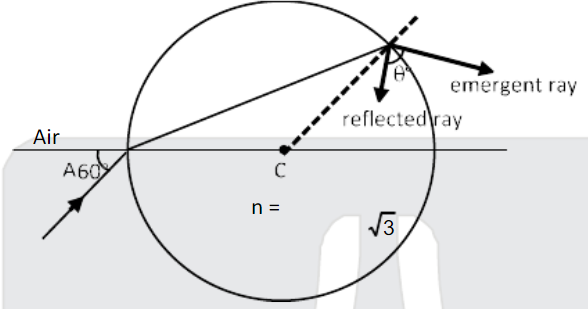 View Solution
View SolutionA ray of light AO is vacuum is incident on a glass slab at angle 60∘ and refracted at angle 30∘ along OB as shown in the figure.The optical path light ray from A to B is :
 View Solution
View SolutionOne side of a glass slab is silvered as shown in the figure. A ray of light is incident on the other side at angle of incidence 45∘. Refractive index of glass is given as √2. The deflection suffered by the ray when it comes out of the slab is
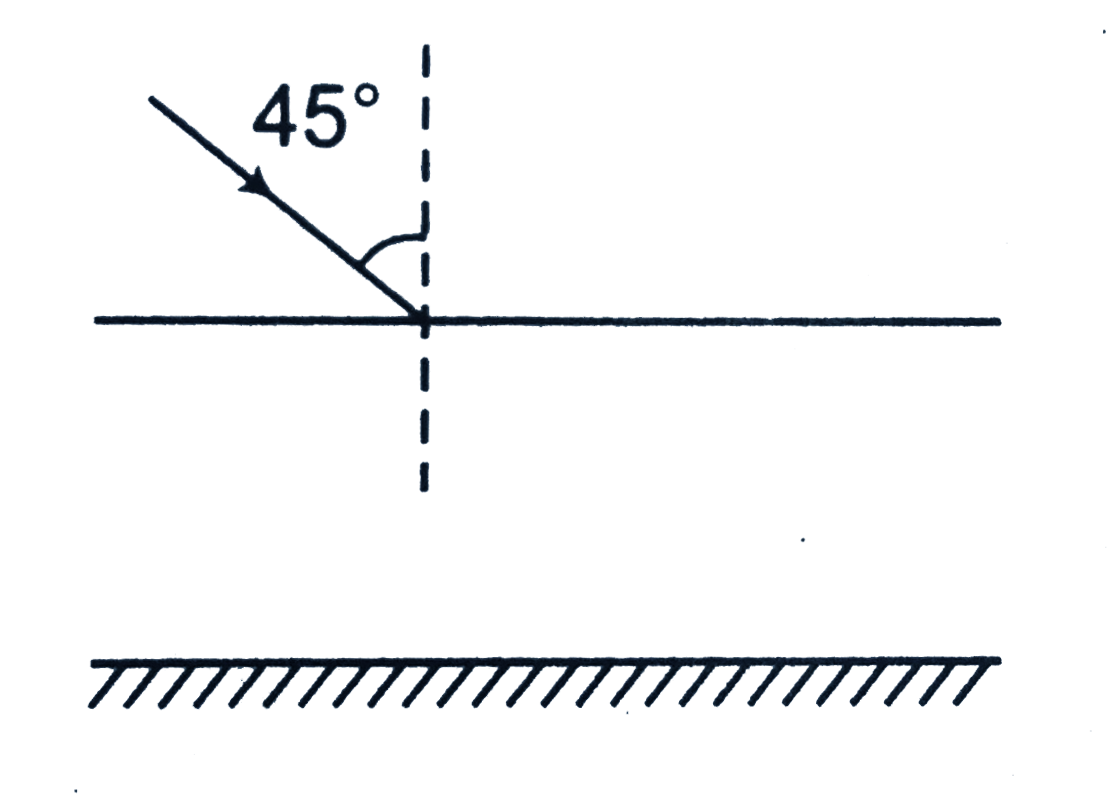 View Solution
View Solution

